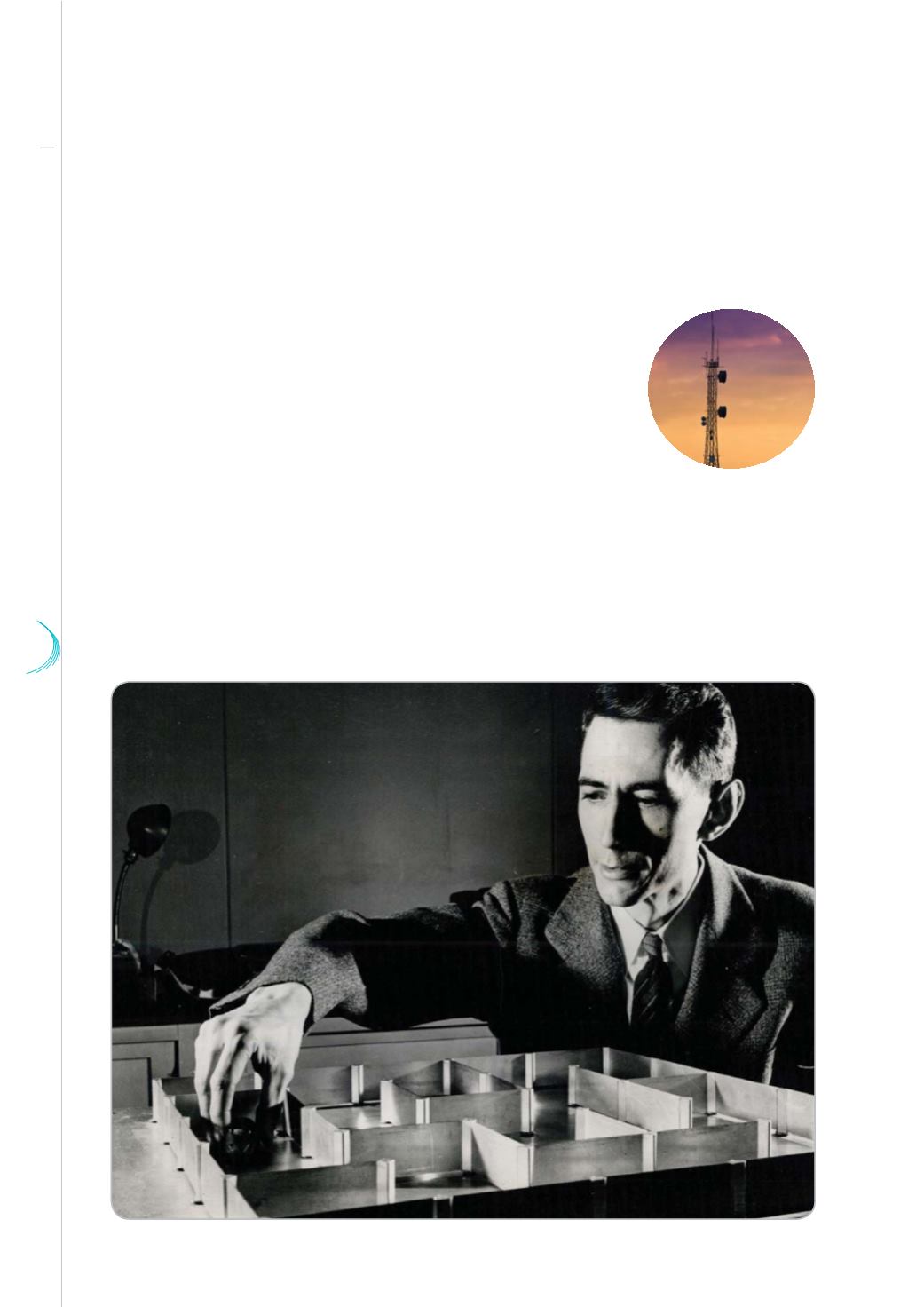

37 38
76
La Lettre
© happystock - Fotolia
© Keystone Pictures USA / Alamy
Claude Shannon (1916-2001)
that separates men, who are intuitive but slow and not very rigorous despite their efforts, and hyperfast
computers, which are unable to make mistakes but lack common sense and intuition. In computer science,
bugs are failures from the programmers, not from the programs themselves. Turing himself wondered then
how to bypass this difficulty, either by mathematically proving that programs are correct – and we have
improved, there – or by using software able to confer some form of intelligence to computers: strength is
always in the software, no on the bare circuit board.
At the beginning of the 1950s, other conceptual revolutions occurred. We owe
to Claude Shannon the revolution of the theory of information. First aimed
at understanding and optimizing the transportation of information on noisy
telephone lines, this theory has become of major importance in many
fields: telecommunications, sound and image compression, general signal
processing, optimization of major networks such as the Internet, etc. At the
same time, process control was born as a new science devoted to analyzing
and controlling physical systems. Maxwell and Wiener were its pioneers, and
it has been well illustrated by our fellow Pierre Faurre on both its research and
industrial sides. And Jacques-Louis Lions’ exceptional personality honoured our company by giving rise
to the use of numerical analysis to solve more and more complex equations and by promoting all forms
of applied mathematics.


















